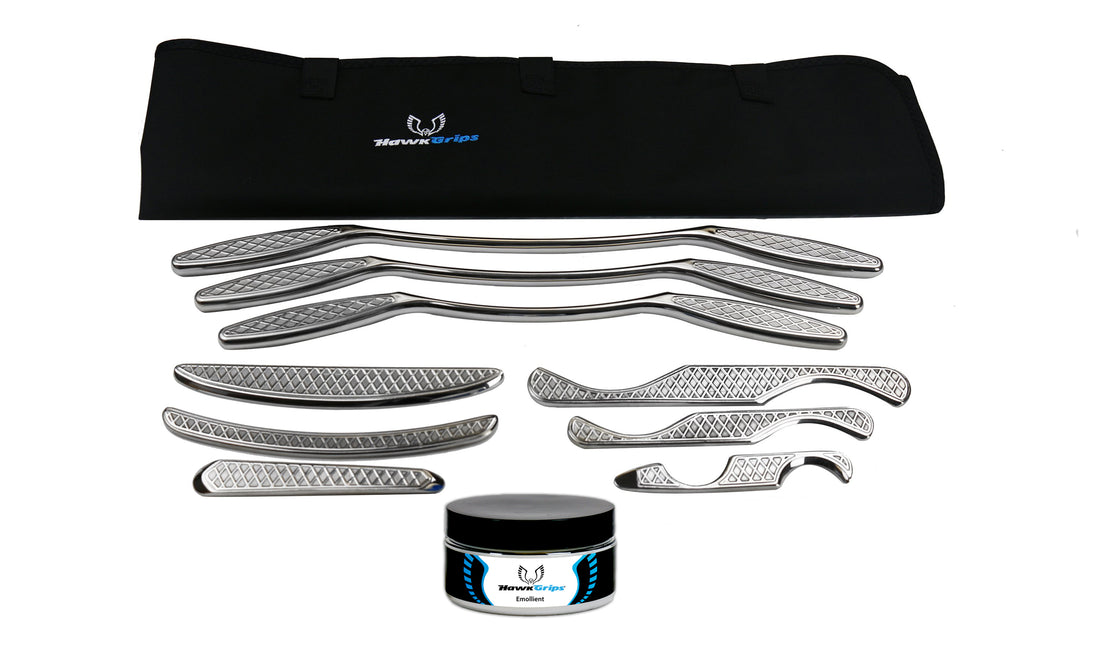If you’re in the world of sports, performance, or rehab - you have probably heard the term “IASTM”. But what is it, exactly? IASTM stands for “Instrument Assisted Soft Tissue Mobilization”. This means, use of a tool or instrument to address and mobilize soft tissue structures - mostly muscles, tendons, and fascia.
There are several mechanisms of action that can make IASTM an effective choice when addressing pain, tightness, or injury. One positive effect of using IASTM is it can create a “neurophysiological effect”. This means that using an instrument on an injured or painful site provides a new stimulus that can help you escape a negative pain-fear-avoidance cycle. Think about if you stub your toe. You may instinctively reach to grab for your toe in order to decrease the pain you are experiencing. IASTM can work in a similar way. Using IASTM is also a way to apply a mechanical load, or physical stress to a tissue. Many times, “stress” can be good, and some structures need it to heal properly. It’s a complex physiological process, but essentially this stress can help your tissue “re-organize” - which can be especially effective to jump start healing in instances of chronic or long-lasting pain. IASTM is also often used after a long period of immobilization, usually following a major injury or surgery. In this case, the instrument is used to help stimulate damaged or poorly healed tissue with the goal of improving range of motion. This is commonly referred to as “breaking up scar tissue” and is usually used in combination with exercise to have the maximum effect. Another one of IASTM's proposed mechanisms is to increase blood flow to the area by affecting fluid movement throughout the body. There are many potential effects that IASTM can have that will vary based on the injury, how the tools are applied, and the person being treated. Keep in mind that a licensed clinical professional would choose to use IASTM after a thorough evaluation and as part of a larger treatment plan.
Lastly, outside of helping their patients and clients, many clinicians use instruments to help themselves - which is a huge benefit. The use of an instrument allows the user to apply force to a broad area or a very small, specific area with less effort than using their hands alone. Many healthcare professionals use tools to decrease fatigue of their own hands, which can help them avoid overuse injuries. And, finally, someone who is really serious about their own recovery and health could even be trained to use IASTM at home. If you are interested in learning more about IASTM and how it works, check out these on-demand courses. For clinicians looking to add another skill to their set, check out these IASTM certification courses.

